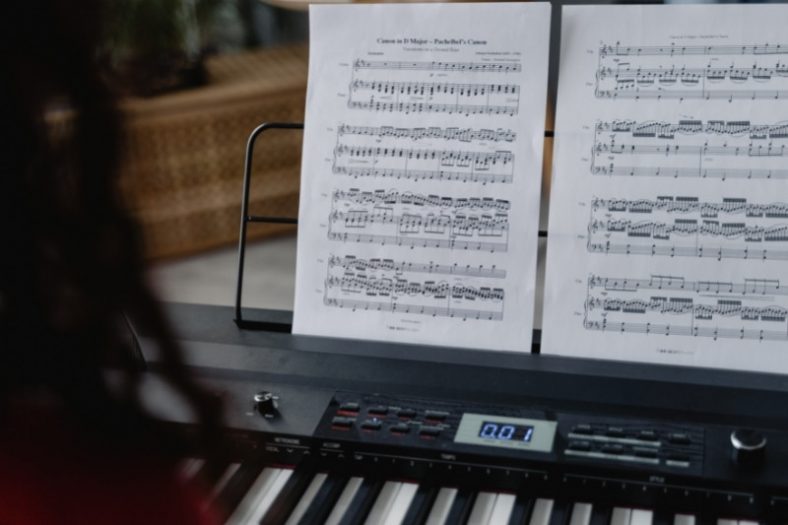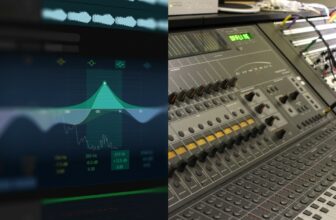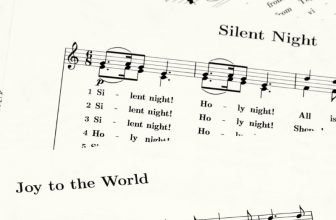What are Polyrhythms?

A polyrhythm is a rhythm in which two sounds are played concurrently without being direct manifestations of the same meter. Polyrhythms tend to involve tuplets, which are rhythms that don’t match the subdivisions of the time signature used in a song.
Polyrhythms are everywhere and many musicians use polyrhythms in their compositions without even understanding them. To get a better grasp of this simple but hard-to-explain musical concept, the best way is to get back to its definition and break it down into parts.
Contents
Understanding polyrhythms
So, what does it mean when “two sounds are played concurrently?” It simply means that the sounds are accompanying each other perfectly measure by measure. In other words, concurrent sounds will hit simultaneously on the 1 of the beat even if they don’t hit simultaneously on beats 2, 3, and 4 (and whatever additional subdivisions may be required).
That’s why these distinct but harmonious rhythms aren’t “manifestations of the same meter.” Imagine you’re listening to a techno track with a 4/4 time signature (i.e., a 4/4 meter). The track features a kick drum that hits on the 1, 2, 3, and 4 and a clap that hits on the 2 and 4. So far, there are no polyrhythms involved. So, what would it take for the track to feature a polyrhythm?
All the track needs is a loop of hi-hats in which there are three hi-hats per measure. The first hi-hat will hit on beat 1, but the other two will hit on subdivisions of the meter that don’t match the track’s 4/4 time signature. But what are “rhythms that don’t match the subdivisions of the time signature used in a song” exactly?
Tuplets, also known as irrational rhythms, are rhythms in which a measure is divided by a different number than the number in a song’s time signature. The measures in the aforementioned techno track are divided into four, and the divisions are symbolized by the four-on-the-floor kick drum. However, it’s possible to divide the same measure into any number.
To use a triplet, one only needs to divide the same measure by three. Instead of counting 1-2-3-4, one would need to count 1-2-3 (meaning each beat would be necessarily longer). But to use a quintuplet, for example, one would need to count the measure as 1-2-3-4-5 (meaning each beat would be necessarily shorter). Dividing beats by seven, nine, or eleven can get trickier, but there are no limitations to this technique.
The key to counting tuplets is to be aware that they always need to fall perfectly on beat 1. That’s also the key to a good polyrhythm: combining rhythms that divide a measure into a distinct number of subdivisions but that always end up “reuniting” on beat 1.
Examples of polyrhythms
Many popular songs feature polyrhythms, from the Dave Brubeck Quartet jazz classic “Take Five” to Led Zeppelin’s “Kashmir.” However, the best way to understand the concept is to listen to polyrhythms in their most basic, fundamental form.
The Youtuber “robertinventor” uploaded a series of simple (and more complex) polyrhythms into his channel using intuitive graphic visualization. These should help you not only to get familiar with the concept of polyrhythms but also train your sense of rhythm.
This is a 4:3 polyrhythm, like the one mentioned in our hypothetical techno track. The 4 stands for a classic 4/4 division, while the 3 stands for a triplet. Notice how both rhythms always line up perfectly on the 1 (i.e., the beginning of the measure).
A 5:3 polyrhythm takes things further by combining a quintuplet and a triplet. Keep in mind that, while this is a 5:3 polyrhythm, these two sounds can be used in a 4/4 song. A 5:3 polyrhythm doesn’t necessarily involve a 5/4 time signature.
Here, “robertinventor” takes things further by demonstrating various polyrhythms in one single video. The 8:9 polyrhythm is particularly dizzying.
To truly interiorize the concept of polyrhythms, it’s important to understand what makes them different from other rhythm-related musical concepts such as polymeter, syncopation, and hemiola.
Polyrhythms vs polymeters: what’s the difference?
Many people misunderstand polyrhythms with polymeters. Unlike a polyrhythm, a polymeter involves the use of two or more rhythms playing simultaneously in different-sized measures.
So, while the sounds of a polyrhythm always “reunite” at the beginning of a measure, the sounds in a polymeter don’t need to do so (and usually won’t). If polyrhythms are made of different tuplets clashing against one another, polymeters are made of loops with different time signatures clashing against one another.
Let’s get back to our hypothetical techno track. It’s playing at a 4/4 time signature with the kick drum on the 1, 2, 3, and 4 and the clap on the 2 and 4. For the track to feature a polymeter, one would need to add a hi-hat loop playing not a triplet, but at a 3/4 time signature.
This means that the hat would align perfectly with the subdivisions already contained in the song, but that the start of the 3/4 measure would not match the start of the 4/4 measure.
Polyrhythms vs syncopation: what’s the difference?
Polyrhythms and syncopation are two completely different concepts even though polyrhythms involve syncopation. Syncopation refers merely to rhythms that rely on subdivisions other than the fundamental subdivisions contained in a measure.
Examples of syncopation can be extremely complex, but something as simple as playing off the beat (i.e., in the beats 1-and-2-and-3-and-4-and) is already considered an example of syncopation.
In other words, syncopation is about adding notes to subdivisions other than the fundamental subdivisions of the time signature, even if these are divisible by the time signature. In a 4/4 song, a 16th-note hi-hat pattern already constitutes syncopation.
Polyrhythms vs hemiola
In music theory, hemiola refers to the 3:2 ratio in both pitch and rhythm. The 3:2 relating to how pitch works is a perfect fifth. The 3:2 ratio relating to how rhythm works is a specific type of polyrhythm.
To put it simply, hemiola is the name given to the 3:2 ratio that, when applied to rhythms, results in a 3:2 polyrhythm. A 3:2 polyrhythm is made of a triplet playing over a duplet. A hemiola is merely the conceptual name applied to the ratio of such a polyrhythm in the realm of music theory.
Conclusion
What drives many people away from music theory is the fact that many musical concepts are harder to describe than they should. The concept of polyrhythms surely fits the part: you’ve heard it everywhere and you may even apply it in your playing and songwriting, but can you explain it in simple terms to someone else?
Hopefully, this short guide on what “polyrhythm” means will be useful for anyone trying to grasp an idea that’s harder to put into words than it is to understand.





